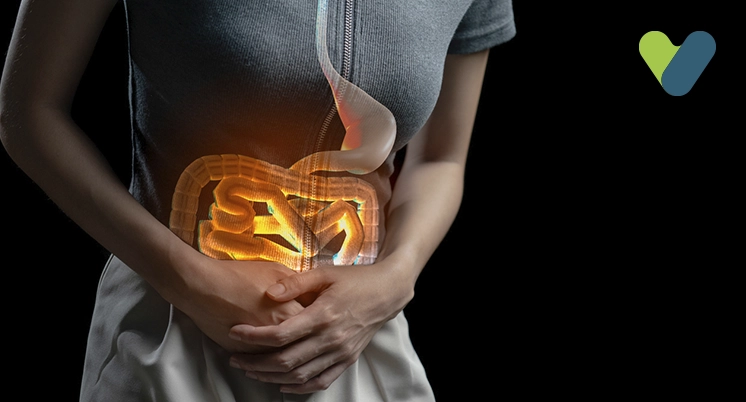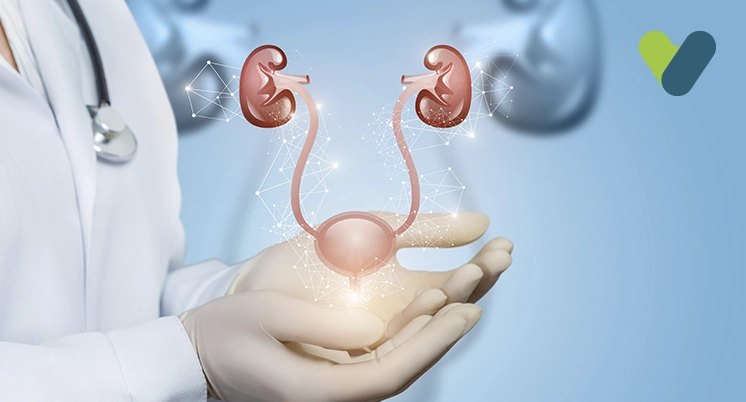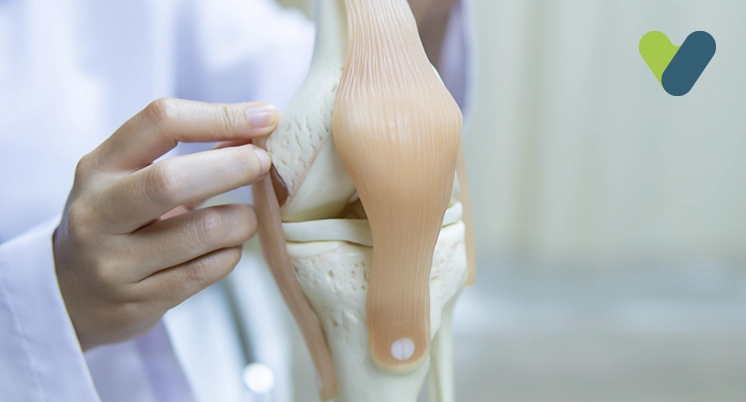Colectomy is a part of a complex treatment procedure used to treat several diseases of the gastrointestinal tract. There are different types of colectomies suitable for different individuals. Depending on the case, a surgeon might also discuss different approaches for performing this surgery. Here, you can know about the basics of different types of colectomies, the procedures involved, and more; keep reading to learn more.
What is a colectomy?
A colectomy is basically a procedure to remove the colon (a part of the large intestine) partially or completely. This is done to treat different colon diseases including cancer, diverticulitis, and inflammatory disease. The colectomy surgery, also referred to as colon resection surgery, is sometimes performed as a part of the treatment for diseases and is usually followed up by one or two more operations later on in such cases.
Colon is the largest part of the large intestines, which helps in extracting nutrition from the partially digested food and convert it into waste. The colon then passes the digested waste to the rectum, which stores this waste till it reaches full capacity and the person can go and empty their bowels at their convenience.
People who have troubles with their large intestines are recommended a colectomy as an urgent or semi-urgent treatment option. However, removing the colon partially or completely is usually one part of the complete recovery process. Restoring near-normal conditions for the person to process food waste is generally the goal, but it is not possible for every patient.
A colectomy only refers to the removal of the colon, after which the surgeon may be able to join the two ends, or they may have to wait for a while to join the two parts and create a temporary solution. A colectomy surgery is usually followed by one of the following procedures:
- Anastomosis This is the process of joining the two ends of the bowel together. Sometimes the surgeon may perform this procedure right after completing the colectomy or do another operation 3 or 4 months after the colectomy.
- Colostomy or ileostomy If the surgeon is not able to perform an anastomosis right away, they will create a stoma near your belly button in your abdominal wall. The upper portion of your large intestines, after removing a part of the colon, is used to create an outlet for the food waste on your stomach—stoma; this process is called colostomy. If the first part of the colon is removed in the colectomy, the surgeon will use the end of your small intestines to create the stoma; this process is called ileostomy.
Different types of colectomy surgery
Depending on the current health condition of the patient, the surgeon will decide whether to keep some of colon or remove it all.- Total colectomy This is a process performed to remove all of the colon, which is a major part of the large intestine responsible for absorbing nutrients.
- Partial or subtotal colectomy This process is performed to remove only a part of the colon, and depending on which part is removed, the operation will have a different medical name, such as:
b. Hemicolectomy This process is conducted to remove half of the colon (either left of right). In the left-side hemicolectomy, the descending colon, which is the section that travels downward on the left, is removed. By contrast, in the right-side hemicolectomy, the ascending part of your colon, which travels upwards on the right side, is removed.
c. Proctocolectomy This procedure is performed to remove a part of the colon and the rectum from the large intestines; in a total proctolectomy, the entire section and rectum is removed.
Why is a colectomy performed?
If the colon or a part of the colon is not functioning properly, the doctors recommend removing it to allow the rest of the gastrointestinal tract (GI) to remain functional and avoid organ failure. A colectomy is a part of the treatment procedure for many health conditions, including the following:- Colon cancer If a patient has colon cancer, the doctors will likely recommend them to undergo a colectomy as it is usually the best way to treat it.
- Precancerous stage If the doctor uncovers a high risk of cancer to the colon during a colonoscopy, they may recommend the patient to remove a portion of the colon as a preventive measure. People who have diseases such as Lynch syndrome or familial adenomatous polyposis (FAP) have a high chance of developing colon cancer and are often recommended a colectomy surgery.
- Large bowel obstruction If the patient has colon blockages that interfere with the normal functioning of the GI tract, the doctor will recommend the patient to go for a colectomy. A colon blockage can be caused by narrowing (stricture) of the large intestine or a twist (Volvulus) in the colon.
- Severe cases of inflammatory bowel disease To people who have Crohn’s disease or ulcerative colitis and are greatly affected by these conditions, the doctor may suggest a colectomy.
- Uncontrolled bleeding If there is a bleeding in the colon, which may be caused by an injury and cannot be treated without surgical intervention, the doctor will perform a colectomy to avoid life-threatening complications.
- Diverticulitis If this condition becomes chronic, or the patient with this disease does not respond to any other treatment methods, the doctor will recommend a colectomy to relieve symptoms.
Preparing for the surgery
If the patient has a colectomy planned, they will have more time to prepare and minimise the risk of complications. The preparation for colectomy will include standard pre-operative test profile including some blood tests and urine tests. Additionally, the doctor will share some care points to prepare for the surgery, including the following:- Certain medications increase the risk of complications, such as blood thinners that may cause excessive bleeding, and the doctor will likely ask the patient to stop taking them for a while.
- A specific diet chart will be given to the patient before the surgery with the specifications of foods that can be consumed for up to 24 hours before the procedure. The patient may be advised to stay on a strictly clear liquid diet for a day before the surgery.
- Additional solutions will also be recommended to clear the bowels; this may lead to mild diarrhoea.
- The doctor may prescribe a course of antibiotics to suppress the bacteria in the colon from causing complications during and after the surgery.
Colectomy procedure
The process for colectomy may defer from person to person, but the general procedure remains mostly the same. The patient will be given general anaesthesia to make them fall asleep and medication intravenously. The surgeon will start by making one or more incisions (depending on the type of colectomy performed) to access the colon. The type of method chosen for the colectomy will determine the location and length of incisions. The surgeon will perform either of the two surgeries mentioned here:
- Open surgery This involves a long vertical incision on the abdomen, which provides easy access to the colon. But this procedure causes more trauma for the body from surgery and takes longer to heal. Surgeons today use this procedure only if the patient has a complicated case or needs to have an emergency colectomy.
- Laparoscopic surgery This is a minimally invasive procedure that involves multiple small incisions in different locations on the abdomen. The surgeon uses a laparoscope with a camera and other instruments to perform the surgery. The patient’s abdomen is also filled with gas to enable better vision during the surgery.
They will then move on to free the affected area from the abdominal tissue and mark the two ends with the help of an energy device and close both ends. They will then carefully remove the affected colon.
The next step of this procedure may be different for each individual; either the doctor will then connect the two ends (anastomosis) or create an outlet on the stomach to excrete (colostomy/ileostomy).
After ensuring everything is okay, the surgeon will then move to clear the wound and close it up.
After surgery care
After the surgery, the patient will be kept under observation for a few days (usually 4 to 5 days) before being discharged. The doctors will monitor their progress until their first bowel movement occurs. Some people may take up to a week to get to this stage, especially if they have other complications.
The patient’s diet, for the first few days, may not include solid food items. The doctors will give them nutrition intravenously and then transition them slowly to a liquid diet and then finally to a soft diet.
If the patient had a colostomy or ileostomy with the colectomy, a nurse will teach them how to take care of their stoma.
The doctors will advice them to rest for 1 to 2 weeks before returning to their work. Complete recovery after a colectomy can take about 3 months, after which the doctors perform the second surgery—anastomosis—if needed.
Risks of colectomy
A colectomy alters one of the major organs of the body—digestive system. Thus, there are risks of serious complications based on the patient’s general health, type of colectomy, and other factors. Listed here are some of the risks of a colectomy surgery:
- Excessive bleeding
- Blood clots in legs and lungs
- Infections
- Nerve damage
- Injury to nearby organs such as the stomach and bladder
- Tears in the reconnected intestines
Outlook for patients
People who undergo a colectomy may have to live with the stoma for the rest of their lives. However, the colectomy is usually followed up by another surgery, which is performed to restore natural bowel movement through the anus, a few months later. Depending on the current health condition of the patient, the doctor may recommend different colectomy procedures and care plans.
A colectomy surgery usually costs about INR 1,50,000 to INR 3,50,000 in India. The figure can vary based on different parameters—location, additional services provided at the hospital, type of colectomy.


